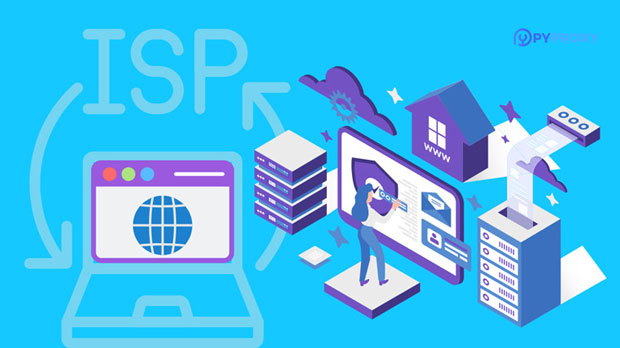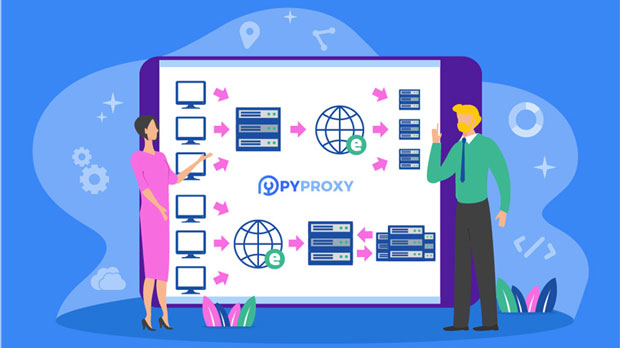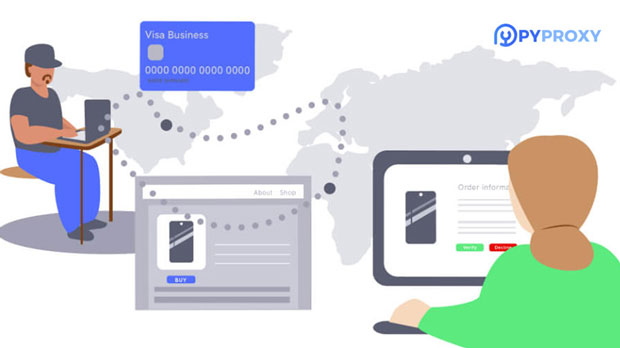In the digital age, advertising verification and market research are vital processes for businesses to gauge performance, understand consumer behavior, and optimize strategies. One critical tool for maintaining anonymity and avoiding fraud is the deployment of socks5 proxies. These proxies act as intermediaries between clients and the web, allowing businesses to securely gather data, conduct research, and verify advertisements without revealing their true identity. PYPROXY helps streamline this process, offering effective proxy deployment solutions. In this article, we’ll explore how PYPROXY’s services assist in deploying Socks5 proxies for ad verification and market research, outlining the benefits and the steps involved in setting up these proxies. The Role of Socks5 Proxies in Ad Verification and Market ResearchSocks5 proxies serve as an essential tool in various digital activities, particularly in the realm of ad verification and market research. These proxies work by acting as a middle layer between users and the websites they wish to access. When deployed in ad verification, they enable businesses to view ads as if they are located in different regions or demographics, helping them to confirm that advertisements appear correctly across various platforms and networks. In market research, Socks5 proxies allow for anonymous data collection, ensuring that surveys, user feedback, and other research methods are not influenced by biases or geographic restrictions.For ad verification, it’s crucial that businesses ensure their ads reach the right audience and are displayed in the correct format, avoiding the risk of ad fraud or misplacement. By using Socks5 proxies, they can simulate different user experiences, thus confirming ad performance across diverse networks. Similarly, in market research, proxies allow businesses to collect unbiased, region-specific data, ensuring that survey responses and consumer interactions are genuine and reflective of the target market.Advantages of Using Socks5 Proxies in Ad VerificationAd verification is a critical component of ensuring that digital campaigns are successful. When using Socks5 proxies in this context, businesses can gain numerous advantages, including:1. Regional Targeting and Geo-Spoofing Socks5 proxies provide the ability to route traffic through different countries or regions, making it possible for businesses to verify the display of ads for specific geographic audiences. This is particularly important when running international campaigns, as ad content might differ based on regional policies, language, or consumer preferences. By using Socks5 proxies, businesses can ensure their ads are shown as intended in various global markets.2. Preventing Ad Fraud Ad fraud, including click fraud and misplacement of advertisements, can undermine the effectiveness of marketing efforts. Socks5 proxies help by enabling businesses to test ad placements and view impressions or clicks without being detected. This allows for the identification of fraudulent activities or inaccurate placements before they cause harm to the brand or budget.3. Anonymous Viewing of Ads With Socks5 proxies, businesses can view their advertisements without leaving a traceable digital footprint. This is important in protecting proprietary campaign details or client information, while still ensuring that the ad content and targeting align with expectations.4. Enhanced Verification of Ad Placement Quality In the competitive world of digital advertising, verifying the quality of ad placements is essential. Socks5 proxies allow businesses to validate whether ads are being placed in premium locations or if they are being buried beneath lower-quality content. This ensures that ads are exposed to the right audience in a high-visibility space.How PYPROXY Supports socks5 proxy DeploymentPYPROXY offers a robust solution for deploying Socks5 proxies, simplifying the process of integrating these proxies into ad verification and market research workflows. Here’s how PYPROXY can support businesses in these areas:1. Seamless Proxy Configuration PYPROXY makes it easy to set up and manage Socks5 proxies, allowing businesses to integrate them into their existing systems without technical complications. Whether used for ad verification or market research, the deployment process is streamlined, making it more accessible even for businesses without dedicated IT teams.2. Scalable Proxy Solutions Whether a business requires a few proxies or thousands, PYPROXY’s solutions are scalable. This flexibility is especially valuable for large-scale ad campaigns or extensive market research efforts. Businesses can easily increase or decrease their proxy usage as needed, making it a cost-effective solution for campaigns of all sizes.3. High Performance and Speed Ad verification and market research often require real-time data collection and analysis. PYPROXY’s Socks5 proxies are designed for high performance and speed, ensuring that businesses can quickly gather accurate information without delays or interruptions. This efficiency is crucial for maintaining the integrity of both advertising and research efforts.4. Security and Privacy With a focus on privacy and security, PYPROXY ensures that all data collected through Socks5 proxies is handled securely. This is particularly important for businesses concerned with protecting sensitive information or maintaining the confidentiality of their market research. PYPROXY’s commitment to encryption and data protection guarantees that the entire process is carried out safely.Implementing Socks5 Proxies for Market ResearchMarket research plays a pivotal role in shaping business strategies and improving customer understanding. Socks5 proxies offer unique advantages in the realm of data collection for market research. Here are some of the key ways in which they enhance market research efforts:1. Bypassing Geographic Restrictions Many online surveys or data sources are restricted to specific countries or regions. Using Socks5 proxies allows businesses to bypass these geographic limitations, enabling them to access research data from all around the world. This opens up new avenues for global market insights and ensures that research efforts are comprehensive and unbiased.2. Ensuring Privacy for Survey Participants In market research, it’s important to protect the identity and privacy of survey participants. By using Socks5 proxies, businesses can ensure that data collection is anonymous, avoiding any potential biases based on location or personal identity. This anonymity encourages more honest and reliable responses from participants.3. Access to Diverse Data Sources Market research often requires accessing a variety of data sources across different websites, forums, and social media platforms. With Socks5 proxies, businesses can access content without triggering security systems or being blocked by websites, ensuring that they can collect the full spectrum of data needed for analysis.4. Validating Customer Interactions By using Socks5 proxies, businesses can validate customer interactions across different digital platforms. This helps to gauge the effectiveness of various marketing strategies, consumer behavior patterns, and how different demographics respond to products or services. Conclusion: The Future of Ad Verification and Market Research with Socks5 ProxiesSocks5 proxies play a vital role in enhancing both ad verification and market research efforts. By providing secure, anonymous, and efficient ways to collect data and verify advertisements, businesses can make more informed decisions and improve their strategies. PYPROXY supports these efforts by offering seamless deployment, scalability, high performance, and robust security. As the digital landscape continues to evolve, businesses leveraging Socks5 proxies for ad verification and market research will be better equipped to stay competitive, validate their campaigns, and understand their target market in a deeper and more meaningful way.
Jan 15, 2025
![arrow]()



















































